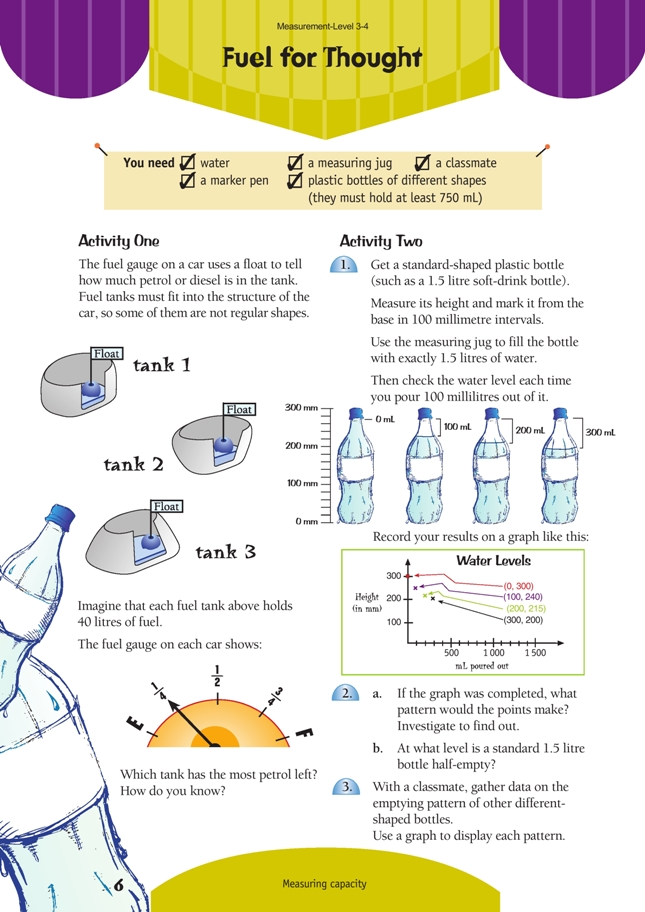Fuel for Thought
This is a level 4 measurement activity from the Figure it Out series.
A PDF of the student activity is included.
Click on the image to enlarge it. Click again to close. Download PDF (366 KB)
investigate capacity of containers
FIO, Level 3-4, Measurement, Fuel for Thought, page 6
water
measuring jug
marker pen
plastic bottles of different shapes (must hold at least 750mL)
classmate
In these activities, students compare the height of the liquid in a container with the amount of liquid. They will see that, depending on the shape of the container, water filled to half the height of the container is not necessarily half the volume of the container.
Activity One
The students who don’t understand how the shape of a container can affect the level of an amount of liquid might answer that all the tanks have the same amount of fuel. A practical demonstration will help them see that this is not the case. (The method suggested here uses siphoning to remove liquid from the container. This means that the students can fairly easily control how much liquid is removed. They may also like to use siphoning instead of tipping for Activity Two.)
Mark four equal gradations on the sides of a flask with a large base. Fill the flask to the top mark with water and colour the water with food colouring to make it easier to see. Use some plastic tubing as a siphon and siphon the water into a beaker until it reaches the 3/4 mark. At this point, one of the students can stop the flow temporarily by placing their finger over the end of the tube, but they need to make sure that they do not remove the tube from the water in the flask because it will not start flowing again if they do. Remove the beaker and siphon the water into another beaker until the water in the flask reaches the 1/2 mark. Repeat this two more times until the flask
is empty. The students can then compare the water in the four beakers. They will see that a quarter drop in the height of the water isn’t the same as a drop of one-quarter of the capacity.
Activity Two
The experiment above would lead nicely into Activity Two, where students graph the results of similar experiments with several different-shaped bottles.
After the students have completed their graphs, they should compare the shape of their graph with the outline of the bottle it comes from and discuss any similarities in the patterns.
Make sure that they have realised that the height of the water drops most quickly at the narrowest part of the bottle and most slowly at the widest part of the bottle.
Answers to Activity
Activity One
Tank 2. Most fuel gauges in cars measure the height of the fuel in the tank (using a floating device), not the amount. So a tank with a wider base will have more
fuel left than a tank with a narrower base or one that is a regular shape.
Activity Two
1.–2. Practical activities. Results will vary.
Teacher to check graph
3. Results will vary. Teacher to check graphs

